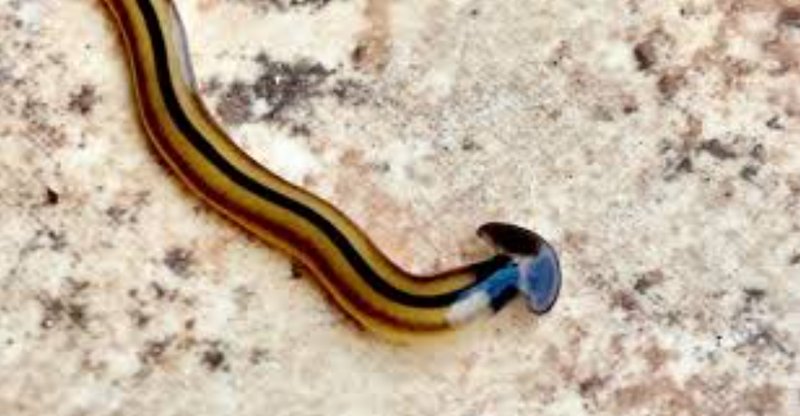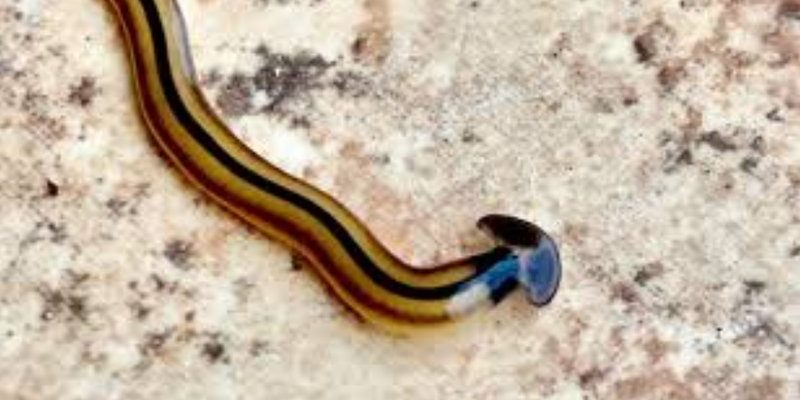
Imagine taking a closer look at the soil or water and realizing there’s a whole world of tiny organisms working together. The Malayan hammerhead worm, with its unique flat, hammer-like head, is like an unsung hero in this world. While it may not be the most glamorous creature, its presence can have a big impact on the health of ecosystems. So, let’s dive into understanding how this little worm contributes to maintaining balanced soil and aquatic ecosystems.
What is the Malayan Hammerhead Worm?
The Malayan hammerhead worm, scientifically known as *Bipalium kewense*, is a type of flatworm that originates from Southeast Asia but has made its way to various parts of the world. It gets its name from its distinctive hammer-shaped head, which gives it a rather unique appearance. More than just a pretty face, this worm is a predator, primarily feeding on earthworms and other small invertebrates.
Unlike other worms that burrow into the ground, the hammerhead worm prefers to stay on the surface, gliding through the soil or swimming in water. This behavior makes it a fascinating addition to our ecosystems, as it interacts with various other organisms. You might be wondering how a flatworm fits into both soil and aquatic settings. Well, these worms can thrive in moist environments, making them versatile inhabitants of both realms.
Physical Characteristics
One of the most striking features of the Malayan hammerhead worm is its shape. These flatworms can grow quite large, measuring up to 30 centimeters in length. Their elongated bodies are usually a dark brown or black color with a lighter, often yellowish underside. The head, shaped like a hammer, is adorned with sensory cells that help the worm navigate its environment.
What really sets this worm apart is its ability to regenerate. If it loses a part of its body, it can regrow that section! This unique trait gives it a resilience that few other worms possess, allowing it to thrive in various habitats.
The Role of Malayan Hammerhead Worms in Soil Ecosystems
Let’s talk about what the Malayan hammerhead worm does for the soil ecosystem. These worms play a critical role in maintaining soil health. By preying on earthworms and other soil-dwelling organisms, they help regulate populations, ensuring that no single species dominates. This balance is crucial for maintaining a diverse and thriving soil community.
Moreover, as these worms move through the soil, they contribute to soil aeration. Their movement creates small tunnels, allowing air and water to reach deeper layers. Consider the soil as a sponge; without proper aeration, it can become compacted, leading to poor drainage and reduced nutrient availability for plants. The hammerhead worm’s activities help keep that sponge functioning properly.
Impact on Soil Nutrients
Another fascinating aspect of the Malayan hammerhead worm’s role in the ecosystem is its influence on nutrient cycling. As these worms consume other organisms, they break down their bodies, releasing nutrients back into the soil. This process enhances soil fertility, providing essential elements for plant growth.
In a way, they act like little recyclers. By breaking down organic materials and returning nutrients to the soil, the hammerhead worm helps create a richer environment for plants and other organisms. Without these contributions, nutrient cycles could become disrupted, leading to less fertile soil and, ultimately, a decline in plant health.
The Malayan Hammerhead Worm in Aquatic Ecosystems
You might be surprised to learn that the Malayan hammerhead worm isn’t just limited to soil. It also finds a home in aquatic ecosystems, where it plays an equally important role. These worms can be found in freshwater bodies, often swimming freely or resting on submerged plants.
In these aquatic environments, their diet remains similar, as they continue to prey on small invertebrates. Their predatory behavior helps regulate populations of these organisms, just as they do in soil ecosystems. This role is essential for keeping ecosystems balanced, allowing various species to thrive alongside one another.
Effects on Aquatic Communities
The presence of Malayan hammerhead worms in aquatic ecosystems can lead to significant changes in community structures. By keeping prey populations in check, they help maintain biodiversity in these environments. When one species becomes too abundant, it can disrupt the balance, leading to overpopulation and depletion of resources.
Think of it like a well-crafted symphony: every instrument has its place. If one instrument plays too loudly or frequently, the harmony is lost. Hammerhead worms ensure that each species plays its part, creating a balanced and vibrant community in the water.
Challenges and Concerns
Despite their important roles, Malayan hammerhead worms can present challenges to ecosystems, particularly when they become invasive. In regions where they are not native, such as parts of North America and Europe, their populations can grow unchecked. When this happens, they can outcompete local species, leading to declines in native invertebrates, including earthworms.
This invasive nature raises concerns about biodiversity loss. When a non-native species thrives, it can upset the ecological balance that has developed over thousands of years. That’s why managing their populations is crucial for maintaining healthy ecosystems.
Management and Control
If the Malayan hammerhead worm becomes a problem in your area, there are several management strategies that can help. Here are a few approaches:
- Awareness and Education: Understanding the species and its impacts can help communities take necessary actions.
- Habitat Management: Maintaining healthy ecosystems can make it harder for invasive species to thrive. This includes proper land use, water management, and pollution control.
- Biological Control: In some cases, introducing natural predators can help keep their populations in check.
Each of these methods focuses on maintaining balance in the ecosystem, just as the hammerhead worm does naturally.
The Malayan hammerhead worm may not be the most glamorous or well-known creature, but it plays a vital role in both soil and aquatic ecosystems. From regulating populations and aerating soil to contributing to nutrient cycling, these worms are like tiny gardeners, working diligently behind the scenes.
As we learn more about these fascinating organisms, we can appreciate their contributions and the delicate balance of nature. By understanding their role, we can help protect our ecosystems—one worm at a time. Whether you’re a gardener or a nature enthusiast, recognizing the importance of these little creatures will enhance your connection to the environment.

